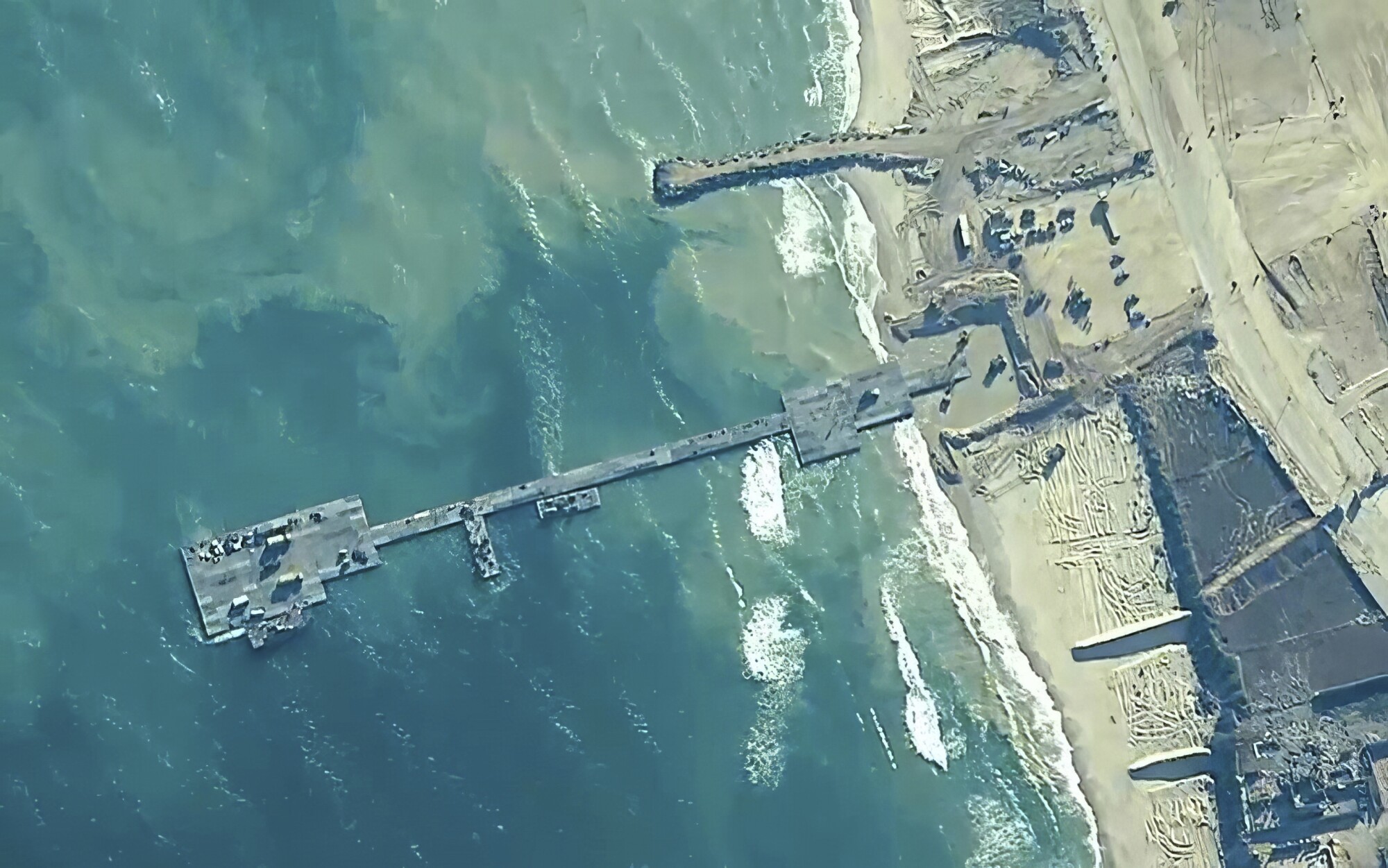As the United States begins repairing the emergency pier off the coast of Gaza, its early breakage raises questions about the project’s viability as a stable passageway for humanitarian aid to the region.
Rough seas and weather seriously damaged the pier less than two weeks into operation. The pier, which the administration has deemed a “crucial” avenue to get much-needed aid into Gaza, is currently being removed for repairs.
“The one thing that we couldn’t anticipate was that North African weather storm,” Defense Department spokesperson Sabrina Singh told reporters Thursday. “Given the high seas that were already happening in the Eastern Mediterranean, that combined force of that other storm made the pier inoperable and damaged it.”
Parts of the Trident pier system are only rated for five-foot waves max, according to military reports, and are designed for Sea State 3, two levels below what the recent storm was categorized at.
Much of the region along the Gaza coast routinely hits that threshold throughout the year, which could mean repeated damages during harsher weather.
Singh said that the regular seasonal expectation during the summer is for much calmer seas, allowing aid delivery to continue. The administration did not present a plan to strengthen the pier against other storm surges.
The Biden administration said the temporary pier was “not meant to be a silver bullet,” but widespread famine and an escalating humanitarian crisis in the region are increasing pressure to get more aid into Gaza fast.
The U.S. had a stated goal of delivering up to 150 trucks of aid per day. During the two weeks, the pier was up and running, more than 1,000 metric tons of aid made it on the ground through that passageway. Roughly a week into operation, the pier delivered 27 of the 70 trucks that got into Gaza, ramping up distribution but falling short of set expectations.
Still, without the pier in operation, USAID Administrator Samantha Power posted on X this week that “conditions are worse now than ever before,” pointing to “Israeli military operations & closed crossings” cutting the flow of aid. According to the Israeli government, only 251 trucks entered Gaza on Thursday, half of what the United Nations has said is needed daily.
Singh said Thursday that USAID was responsible for developing alternate avenues to deliver aid. Military operations continue in Cyprus to load trucks and enable the pier delivery once the pier is reestablished. USAID did not respond to a request for comment.
The Department of Defense has said that repairs on the Trident pier system will take “more than a week” in the Israeli port of Ashdod, 18 miles north of Gaza along the coast.
“The pier, part of the overall broader maritime corridor, has proven to be crucial in delivering supplies,” Vedant Patel, spokesperson for the State Department, said when asked what options might be available to deliver aid with the pier no longer functional. “We expect the repair and re-anchoring of this pier to happen as quickly as possible.”
Patel suggested that, in the State Department’s view, the infrastructure to support the pier continues to be a “viable option for the humanitarian aid.”
While the administration is being asked for solutions to the sudden loss of capability, all rely on the Israeli government’s approval. Aid drops, an extremely limited and logistics-heavy operation and one of the first moves taken by the administration to alleviate the humanitarian crisis in Gaza, are now untenable, Singh said, due to winds and Israel’s military operations.
“We would like to continue to do those airdrops, but we also assess whether it’s safe to do it,” Singh said. “We cannot do some airdrops when the IDF is conducting operations; we don’t want civilians running into an active battle space.”
—
John T. Seward is a NOTUS reporter and an Allbritton Journalism Institute fellow.



